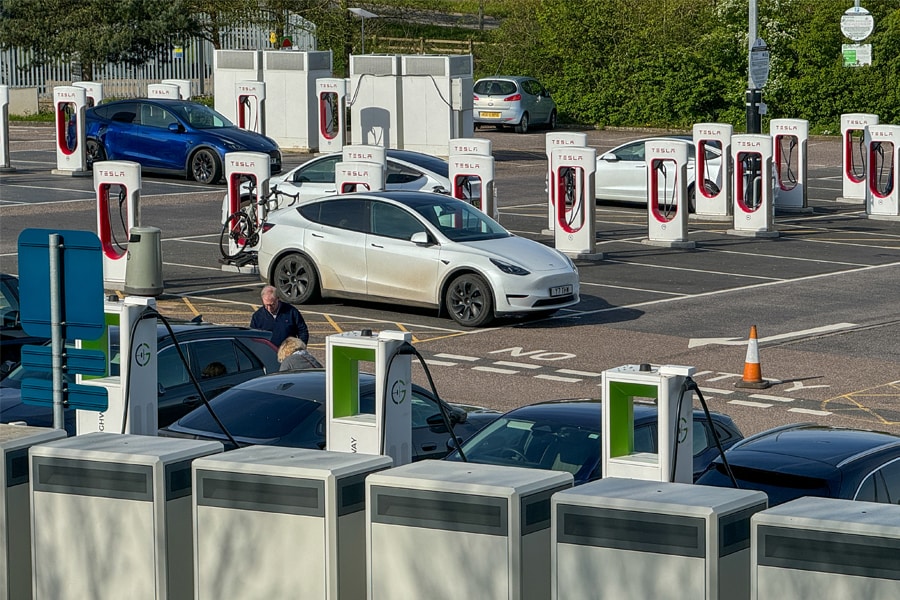
Electric cars, now and in the future
The all-electric future seems to have hit a speedbump — or maybe just a detour
 Electric cars including Teslas recharge at a charging area of a motorway service station on April 13, 2024 in Exeter, England. The European Union plans to ban all new sales of carbon-emitting petrol and diesel cars by 2035. Originally the UK planned to ban the sale of new petrol and diesel cars in Britain will by 2030, however this has recently put back still further.
Image: Matt Cardy/Getty Images
Electric cars including Teslas recharge at a charging area of a motorway service station on April 13, 2024 in Exeter, England. The European Union plans to ban all new sales of carbon-emitting petrol and diesel cars by 2035. Originally the UK planned to ban the sale of new petrol and diesel cars in Britain will by 2030, however this has recently put back still further.
Image: Matt Cardy/Getty Images
In June 2022, after intense negotiations, the 27 EU member states agreed to the European Commission’s proposal to effectively ban the sale of new internal combustion vehicles by 2035, forcing the adoption of pure battery electric vehicles (BEVs). China, Japan and the United States are on a similar path.
Almost two years later, in May 2024, this planned transition has hit a rough patch: Sales of BEVs are stagnating or falling, iconic BEV companies are facing falling quarterly sales, and some decision-makers are openly questioning the 2035 deadline. In addition, the United States has just announced that it will tax electric vehicles from China 100%, and Europe will similarly levy tariffs of up to 25%, which will reduce their competitiveness. Is all this a serious stall or just a temporary setback to the wider deployment of electric cars? Where to from here?
The strengths of the battery electric vehicle
The electric car is superior to a traditional car in turning stored (electric) energy into kinetic energy of movement. It has no local emissions, it is easier to manufacture and it makes more space available to passengers, as the motor and powertrain are smaller. Moreover, it is better adapted to the increasing importance of electronics and software and their seamless integration with mobile phones. It is one step closer to becoming a mobile device itself, as visionaries postulated years ago. It is also less noisy. Most people who have driven an electric vehicle are not too keen on returning to a traditional car.The current challenges of the electric vehicle
Some challenges, however, remain. One is the high cost of batteries. Predictions by leading OEMs that by 2020 battery packs would reach the crucial threshold of $100/kWh, putting them at cost parity with traditional cars, have not materialized. Worse, the remarkable drop in cost that we saw from 2010 (when it was approximately $1,000/kWh) to today cannot continue; that cost curve is flattening out.A related problem is the residual value of electric vehicles: While for traditional cars there is a liquid secondary market, the secondary market for BEVs is still in its early stages. One reason, again, is the high cost of batteries if they need to be replaced. This problem has led leading car rental companies such as Hertz and Sixt to rethink their BEV strategies.
[This article has been reproduced with permission from IESE Business School. www.iese.edu/ Views expressed are personal.]


















